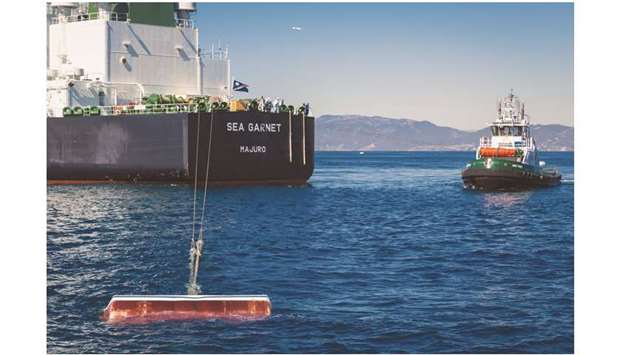Record-high shipping costs are spilling over into the prices for refined fuels in Europe, Asia and the US.
As freight rates rocket amid US sanctions and geopolitical risks, the prices of oil products such as gasoline and diesel are being forced to adapt in order to enable trade.
Europe has long made excess gasoline, giving traders a lucrative opportunity to ship it to the US Now, the increase in tanker rates is hitting at a time when crude flows have also been disrupted by the same surge in shipping costs.
The cost of hauling freight on the route has soared to its highest since 2015, according to Baltic Exchange data. That helped make US gasoline the most expensive it’s been relative to Europe, on a seasonal basis, since 2016.
“This is all because the explosion in dirty freight costs creates the risk that larger clean tankers switch to dirty service,” said Robert Campbell, head analyst for global oil products markets at Energy Aspects. Clean tankers refer to those carrying refined fuels; dirty tankers haul crude or fuel oil.
The cost of shipping oil products such as diesel and jet fuel on a mid-sized tanker on the Middle East-to-northwest Europe route has surged as well. Earlier this week it reached $50 a tonne, the highest since 2008. Rates from India to northwest Europe have also increased.
While the seaborne trade of refined products is only about half that of crude oil, it’s still the market’s main way of balancing structural surpluses and shortages that routinely emerge in different parts of the world. As such, it performs a vital role in avoiding supply scarcity. The more expensive shipping gets, the higher a buyer has to bid and/or the lower a seller has to offer in order to make the trade viable.
Since the spike in freight rates several weeks ago, the value of diesel relative to crude in Europe – a net diesel importer – has edged up to its highest since 2018. Other factors, such as refinery maintenance and looming ship-fuel rules that are putting upward pressure on diesel prices, may also be playing into that number. At the same time, the price of diesel cargoes in the Middle East is generally falling, a trader said on Wednesday.
Ripples are also being felt in the market for naphtha, a petroleum product used to make gasoline and as a feedstock for petrochemicals. Regularly shipped from Europe to East Asia, the cost of that voyage has surged to $3.97mn, the highest it’s been since at least 2016.
How long the situation lasts is unclear. The cost of hiring tankers that typically ship crude and fuel oil has retreated after spiking last week, with analysts saying the high costs weren’t sustainable.
Rates initially rose in the wake of the US sanctioning units of China COSCO Shipping Corp, the world’s largest merchant vessel owner, as well as an attack on an Iranian ship. As shippers get their vessels ready for a sulphur capon marine fuels, a number of tankers are also at repair yards, further tightening the freight market.

An oil tanker is pulled by a tugboat near the El Segundo Offshore Oil Terminal in El Segundo, California (file). Record-high shipping costs are spilling over into the prices for refined fuels in Europe, Asia and the US.
